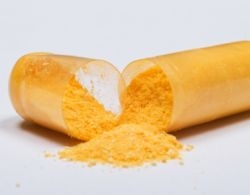Capsules: Dosing and Weight Control
January 20, 2010

by Jim Moorhead
The dosing section of a tamping style machine is the heart of the operation. Either quality is made or it caused 90 percent of the defects. Understanding this section is vital to good quality and weight control; this includes knowing proven set-up methods and parts.
Weight control on a tamping machine is controlled by three basic steps:
selecting the proper thickness of the disk for the density and fill weight of the powder being run;
proper tamping station settings; and
height of the powder in the powder bowl.
In many dietary supplement manufacturing operations, there is only one thickness disk for each size capsule product the company runs. However, the machine was designed to use the disk as a volumetric chamber; this chamber holds the correct volume, determined by thickness of the disk and density of the product. Bosch Packaging, one of the innovators of this style machine, sells a slug tester to help formulators understand and develop products. It simulates the tamping style machine and tells the formulator what thickness disk should be used, whether the product is compatible with the machine and if it slugs, which is what allows for proper weight control and quality of the end product. Multiple disks are required for multiple formulations.
Consider, if you were trying to put 500 mg of feathers into a capsule, it would take a very thick disk; if tomorrow you wanted to put 500 mL of iron, the disc would be very thin. This is true between heavy bulk density and light, fluffy products. This machine is designed to tamp. When no tamping is applied, process control of the weight is nearly impossible. In some cases, the capsule or machine supplier can help with this testing. As a rule, consider using three disks per capsule size, the thickest, thinnest and a mid-size, with selection determined by proper testing of the formulations.
A tamping machine is designed to use a number of tamping stations and tamping pins with a disk that is a compatible thickness for the amount of weight expected in the capsule. In a typical 90,000 capsule machine, the pins are in six stations (12 pins each) with the sixth being a discharge or dosing station. The proper set-up method is to use a step tamp: station 1 is a load station, where the pins enter about three-fourths of the disk thickness; station 2 about one-half the thickness; station 3 one-quarter; station 4, a few millimeters; and station 5, just touching the top of the formed slug. It is then possible, if the product is compatible to the disk, to use stations 3 and 4 for weight adjustment, saving 5 for very small adjustments.
Finally, the powder bowl should always be run with the least amount of powder possible. This helps keep the machine clean and save product. Most machines have adjustments for powder bed height and auger speed to ensure powder replacement as used.
With the system in place, personnel must be trained to understand tamping, and management must realize the machine has certain capabilities. As the basic machine design was for pharmaceuticals with low amounts of actives, it permitted the addition of necessary excipients to tamp properly, as well as the use of other compaction aids, lubricants and glidants. However, often in the dietary supplement industry, marketers and consumers are looking for more natural ingredients and production methods. This means looking for natural ingredients that can be used to lubricate and help with compaction and flow; otherwise, weight control and proper product quality become difficult.
Jim Moorhead, currently director of technical service at BioCaps Enterprise , has been in the capsule business since 1973, working in areas including capsule machine installation and operation through management, including working as a customer technical service manager or director for three capsule companies.
You May Also Like